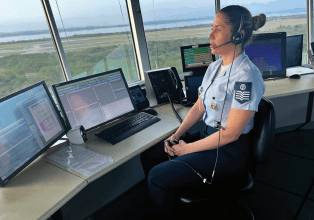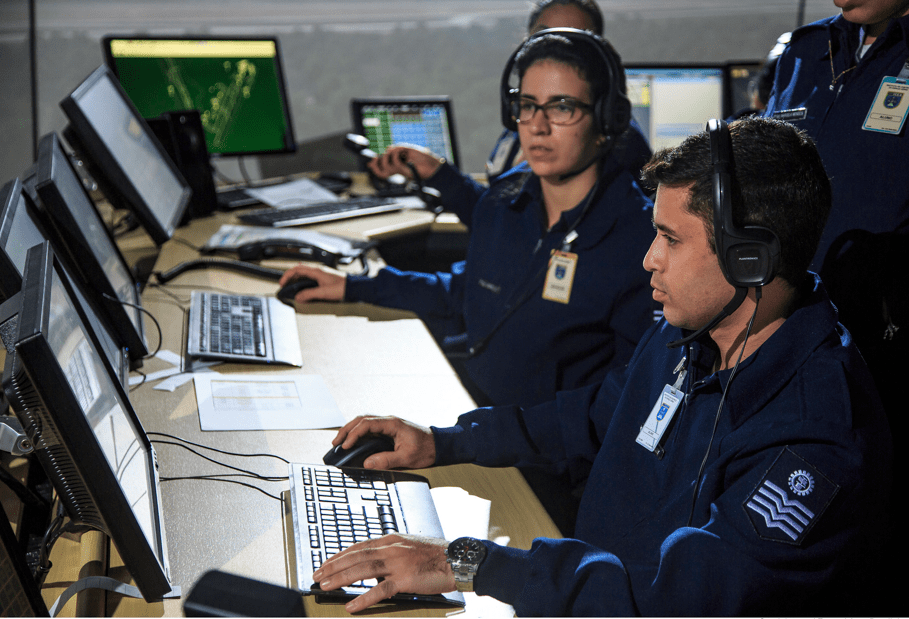October 20th, International Air Traffic Controller’s Day, is marked to honor men and women, military and civilian, who dedicate themselves to this profession
Agência Força Aérea /DECEA, by Lieutenant Raphaela Martorano
Day and night, seven days a week, 365 days a year. There the Air Traffic Controllers are in their operational bodies, guiding procedures for ascent and descent, ensuring the separation between aircraft in controlled airspaces and providing aeronautical information to pilots, actions that aim to conduct flights in a safe and orderly manner to their destinations. Every year, in Brazil, they control more than 1.3 million air movements, which transport more than 100 million people and a million tons of cargo.
These “guardian angels” of the skies allow Brazil to have one of the most recognized Air Traffic Control Systems in the world. Therefore, October 20th, International Air Traffic Controllers’ Day, is marked to honor men and women, military and civilian, who dedicate themselves to this profession. The date was instituted in 1960 to mark the first meeting of these professionals, which was held in Greece.

The first class of Air Traffic Controllers of the Brazilian Air Force (FAB) was formed in 1944, at the former Technical Aviation School (ETAv). In 1951, the ETAv, located in São Paulo (SP), and the Aeronautical Specialists School (EEAR), in Rio de Janeiro (RJ), were unified and transferred to Guaratinguetá (SP), resulting in the current EEAR. These professionals work at the Aerodrome Control Towers (ATT), Approach Control (APP), Area Control Centers (ACC), Military Operations Control Organs (COPM) and, eventually, in other functions that contribute to the advancement of Air Traffic Control activity in the country.
The daily service of a controller is dynamic and requires agility, concentration, synergy, organization and, mainly, teamwork. “The main challenge is to keep yourself constantly updated to be prepared for adverse situations, such as emergencies,” says Sergeant Weslei Canêdo de Oliveira, who is part of the staff of the Galeão Airspace Control Detachment (DTCEA-GL), in Rio de Janeiro.

Graduated from EEAR in 2004, Sergeant Canêdo worked for eight years at the Curitiba Area Control Center (ACC-CW), providing air traffic service in the south, southeast and part of the mid-west regions. He also worked at the Approach Control of Belo Horizonte (APP-BH) and is currently the Operational Adjunct of the Approach Control of Rio de Janeiro (APP-RJ), the operational body that guides aircraft from takeoff to the beginning of the en route phase of the flight, and from the beginning of the descent until landing.
“This is the phase of flight where the aircraft are closer together and at lower altitudes, usually around a city. The APP controller determines the sequence of aircraft for landing, separates the approaching traffic from the outgoing traffic, and authorizes the entry of aircraft into controlled airspaces,” clarifies Sergeant Canêdo.
Another operational body is the Aerodrome Control Tower. In addition to the military, civil controllers also work in the operational positions of traffic authorization, ground control and tower control. “In general, the controllers’ attributions in the towers are to issue takeoff and landing authorizations for aircraft in the traffic circuits and Special Helicopter Wheels in their area of jurisdiction; to authorize flight plans, by instruments or visual; to authorize the taxiing of departing and arriving aircraft, in addition to the movement in the maneuver area,” explains the Supervisor and Instructor of the Galeão Control Tower (TWR-GL), Sergeant Pollyana Machado Voazem.
Photos: Petty Officer Johnson, Sergeant Canêdo and Sergeant Pollyana / CECOMSAER, APP-RJ and TWR-GL
*** Translated by the DEFCONPress FYI Team ***
